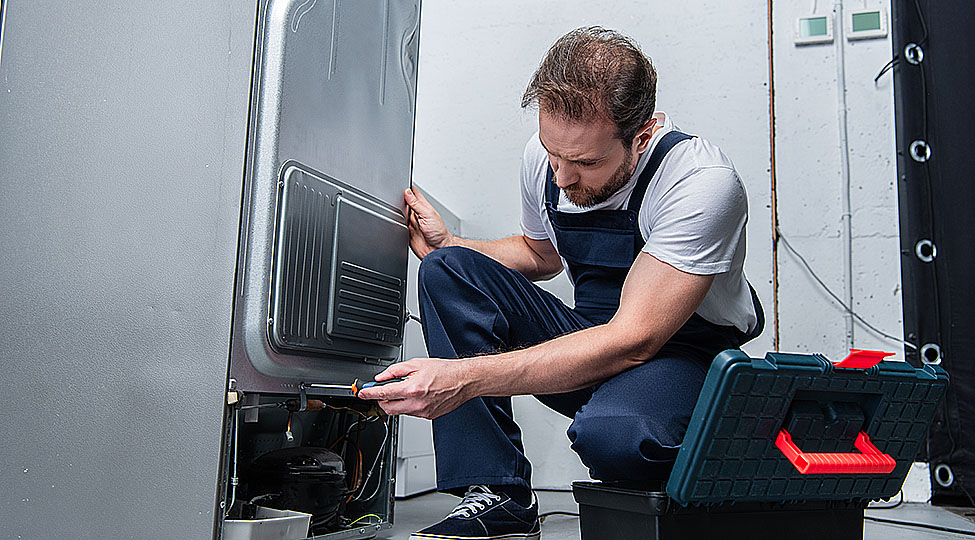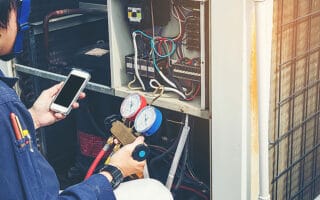As winter approaches, ensuring your HVAC system is ready becomes essential for a warm and comfortable home. HVAC companies recommend simple yet effective tips to winterize your heating, ventilation, and air conditioning (HVAC) system. From professional inspections to DIY maintenance, these tips will not only keep you cozy but also contribute to energy efficiency and prevent potential breakdowns.
Preparing Your HVAC System for Winter: Simple Tips for Cold Weather
There are straightforward tips to winterize your heating, ventilation, and air conditioning (HVAC) system, keeping your home cozy and energy-efficient.
Replace Air Filters Regularly
Air filters play a crucial role in maintaining indoor air quality and system efficiency. During winter, when your HVAC system works harder, it’s essential to replace filters regularly. Filters with a clog can obstruct airflow, making your system less effective and potentially leading to increase of energy bills. Make it a habit to change filters every 1-3 months for optimal performance.
Seal Leaks and Insulate
Warm air escaping and cold air seeping in can disrupt your HVAC system’s efforts to keep your home warm. Identify and seal any leaks around windows, doors, and ducts. Additionally, consider adding insulation to key areas like attics and crawl spaces. This simple step will not only keep your home warmer but also reduce the workload on your HVAC system, saving you money.
Program Your Thermostat
A programmable thermostat is your ally in energy efficiency. Set a lower temperature when you’re away or sleeping and raise it when you’re at home. This approach ensures that your HVAC system works efficiently, maintaining a comfortable temperature while minimizing energy consumption. Programming your thermostat is an easy and effective way to save on heating costs during winter.
Check and Clean Vents and Registers
Vents with a block and registers can impede the flow of warm air throughout your home. Regularly check and clean these components to ensure smooth airflow. Move furniture or other items that might be inadvertently blocking vents. This simple practice promotes better heating distribution and enhances your HVAC system’s overall performance.
Inspect Your Carbon Monoxide Detector
Safety is paramount, especially during the winter when your heating system is in constant use. Make sure your carbon monoxide detector is functioning correctly. Replace batteries if necessary and test the detector to guarantee it can alert you to any potential dangers. A properly working detector provides peace of mind, protecting your home from this colorless, odorless gas.
Clear Debris Around the Outdoor Unit
If your HVAC system has an outdoor unit, ensure that it is free from debris. Remove leaves, twigs, and any other objects that may accumulate around the unit. A clear outdoor unit facilitates better airflow, allowing your system to operate efficiently. This simple task contributes to the longevity of your HVAC system and helps maintain its performance during winter.
Keep Registers Open
Closing vents in out of use rooms may seem like a smart energy-saving move, but it can actually disrupt the balance of your HVAC system. Keep all registers open to maintain even airflow throughout your home. This practice prevents strain on your system and ensures consistent warmth in every room.
Recognizing Signs Your Furnace Requires Professional Help
Winter brings the need for a reliable furnace to keep our homes warm. Sometimes, though, our furnaces might not work as they should. Regular maintenance and prompt furnace repair services Falls Church can ensure that your heating system operates efficiently throughout the chilly season, preventing potential breakdowns and ensuring a cozy home environment.
Insufficient Heat
When your furnace is not producing enough heat, it’s a red flag. If you set your thermostat to a comfortable temperature, but your home still feels chilly, your furnace may need professional attention. This could be due to a malfunctioning thermostat, a faulty ignition system, or issues with the heating elements.
Unusual Noises
Furnaces usually operate quietly in the background, providing warmth without much fuss. If you start hearing strange noises like banging, squealing, or rattling, it’s time to call in a professional. Unusual sounds can signal problems with the blower motor, ignition, or other internal components that require expert inspection.
Constant Cycling
If your furnace is turning on and off frequently, it is known as short cycling. This can lead to an increase of wear and tear on your system and higher energy bills. Short cycling may be the result of a range of issues, such as a clog of air filter, a malfunctioning thermostat, or problems with the flame sensor. A professional technician can diagnose and fix the root cause.
Strange Smells
Odd smells coming from your furnace are a cause for concern. If you notice a burning smell, it could indicate a problem with the electrical components or the blower motor. A musty odor may suggest mold growth inside the ductwork. Whatever the smell, it’s best not to ignore it. Contact a professional to identify and resolve the issue promptly.
Pilot Light Issues
For those with gas furnaces, the pilot light is a critical component. If you observe that the pilot light is frequently going out or has a yellow or flickering flame instead of a steady blue one, it’s time to seek professional assistance. Pilot light issues can be a sign of problems with the gas supply, thermocouple, or burner assembly.
Higher Energy Bills
If your energy bills are unexpectedly rising, your furnace might be working harder than necessary. This could be due to less efficiency by issues such as a dirty air filter, malfunctioning thermostat, or problems with the heat exchanger. A professional inspection can identify the cause and help you save on energy costs.
Inadequate Airflow
Insufficient airflow can lead to uneven heating in your home. If some rooms are warmer than others, it may indicate issues with the blower motor, air ducts, or air filter. A professional can evaluate the airflow and recommend solutions to ensure consistent heating throughout your home.
Carbon Monoxide Detector Activations
If your carbon monoxide detector is alerting you frequently, it’s a serious matter. Carbon monoxide is a colorless, odorless gas that can be harmful. Furnace issues, such as a crack in the heat exchanger, can lead to the release of carbon monoxide. If your detector sounds, evacuate your home immediately and contact a professional to inspect your furnace.
Conclusion
Winterizing your HVAC system is a proactive and necessary step to ensure a cozy and energy-efficient home during the colder months. By following these simple tips and recognizing signs that your furnace may need professional attention, you can enjoy a warm and comfortable living space throughout winter while also maximizing the lifespan and efficiency of your HVAC system. Additionally, consider scheduling a heat pump repair McLean service as well to address any potential issues and keep your heating system running smoothly throughout the winter season.



